Khatema Dealers Meet 2025
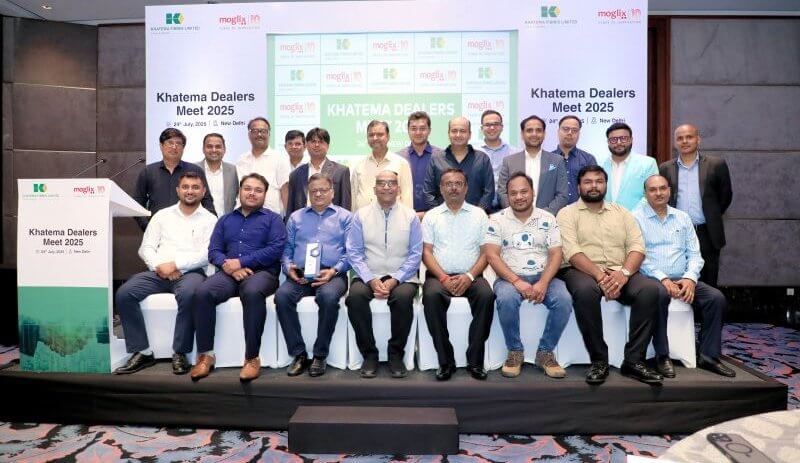
Khatema Dealers Meet 2025
Date: 24th July 2025
Organizer: Moglix
About the event: We recently organized the Khatema Dealers Meet 2025 in New Delhi, themed “Partners in Progress”, to celebrate our shared journey of growth with the Khatema Fibres dealer network. The event was led by Mr. Sandeep Goel (Managing Director & COO, Moglix; Whole-Time Director, Khatema Fibres Limited) Along with Mr. Madan Gopal Yadav (Associate Director, Moglix), focusing on strengthening partnerships, aligning business objectives, and acknowledging outstanding contributions.
Moglix Supplier Meet – Daksh
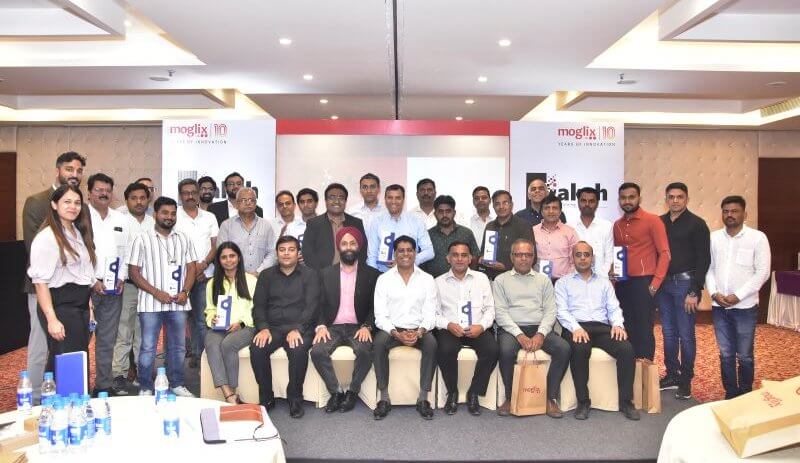
Moglix Supplier Meet – Daksh
Date: 23rd July 2025
Organizer: Moglix
About the event: We recently hosted the Moglix Supplier Meet – Daksh in Pune under the theme “Winning Together,” bringing together our valued supplier partners for a day of collaboration, knowledge sharing, and feedback. Led by Mr. Chaitanya Kulkarni, Director at Moglix, Mr. Navneet Singh Oberoi, Senior Director at Moglix, Mr. Gaurang Bhalerao, and Ms. Sugandha Grover, the session focused on strengthening partnerships through innovative strategies and driving collective growth.
DRG Bitumen Plant Inauguration
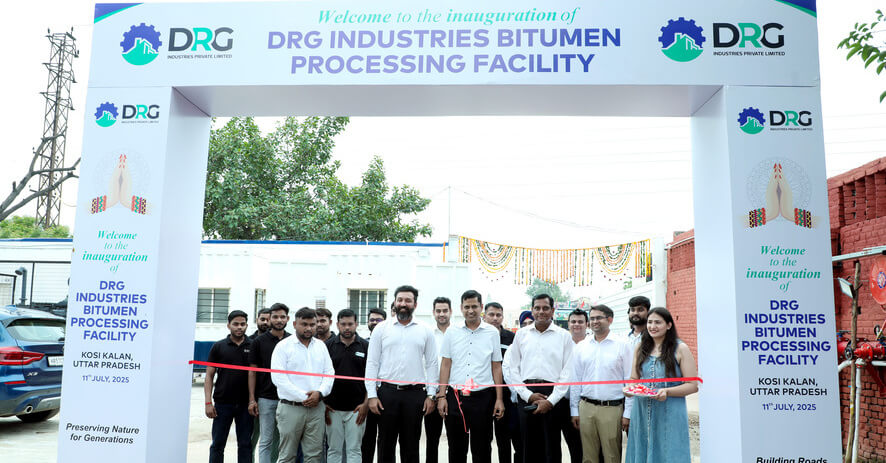
DRG Bitumen Plant Inauguration
Date: 11th July 2025
Organizer: Moglix
About the event: The inauguration of the DRG Bitumen Plant at Kosi Kalan, Mathura, marks a major step toward a self-reliant and future-ready Bharat. Spanning 3.5 acres, this advanced facility will drive sustainable bitumen innovation, ensuring quality, consistency, and durability for India’s roads, runways, and roofing.
Leveraging Data Analytics for Enhanced Supply Chain Visibility
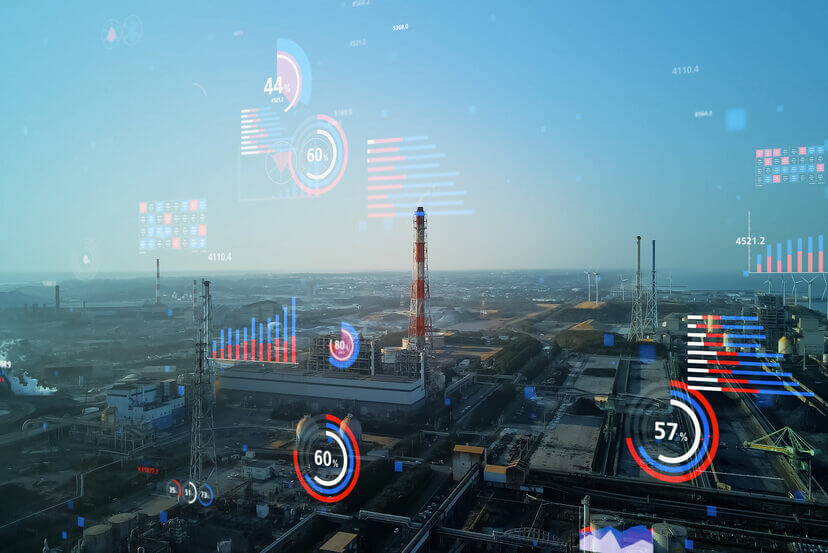
Leveraging Data Analytics for Enhanced Supply Chain Visibility
Supply chains are growing more complex with the expansion of global trade and rising customer expectations. To stay competitive, businesses need supply chain analytics to gain real-time insights, optimize operations, and improve efficiency.
Through data-driven decision-making, manufacturers and suppliers can better forecast, enhance inventory management, and minimize disruptions. In this blog, we’ll explore how supply chain analytics is transforming the industry and enabling greater visibility in manufacturing.
Supply Chain Analytics: A Game-Changer for Manufacturing
Supply chain analytics employs data and technology to track and analyze supply chain performance. It enables manufacturers to:
- Identify inefficiencies and bottlenecks
- Predict demand fluctuations
- Optimize procurement and inventory management
- Improve supplier relationships
- Reduce operational costs
With advanced data-driven decision-making, businesses can react swiftly to market changes and customer demands, ensuring smoother supply chain operations.
How Data-Driven Decision-Making Enhances Supply Chain Visibility
One of the biggest advantages of supply chain analytics is its ability to enhance visibility in manufacturing. Real-time data allows businesses to track shipments, monitor inventory, and anticipate potential disruptions.
Here’s how data-driven decision-making plays a role in supply chain visibility:
- Real-time Tracking: Sensors and IoT devices offer immediate updates on shipments, enabling businesses to swiftly respond to delays or route changes.
- Demand Forecasting: AI-powered analytics predict future demand trends, preventing stockouts or overstocking.
- Supplier Performance Evaluation: Businesses can assess supplier reliability and make informed decisions based on data.
- Risk Management: Predictive analytics can foresee supply chain disruptions and recommend contingency strategies.
With improved visibility in manufacturing, businesses gain full control over their supply chain operations.
Key Data Analytics Tools Transforming Supply Chains
Modern manufacturers use a range of data analytics tools to enhance supply chain analytics and improve efficiency. Some of the most impactful tools include:
- AI and Machine Learning – These tools analyze past trends to provide precise demand forecasts and recommend inventory optimizations
- IoT and Real-Time Tracking – Uses sensors and GPS to provide live supply chain updates.
- Big Data Platforms – Consolidate information from multiple sources to enhance decision-making.
- Cloud-Based Supply Chain Management Software – Facilitates smooth collaboration between teams and suppliers.
- Blockchain for Transparency – Provides secure and transparent tracking of goods from origin to delivery.
By implementing these tools, businesses can enhance data-driven decision-making and gain better visibility in manufacturing processes.
Benefits of Supply Chain Analytics for Inventory Management
Effective inventory management is a crucial aspect of manufacturing, and supply chain analytics plays a vital role in optimizing stock levels. Here’s how:
- Prevents Stockouts and Overstocking: Data insights assist businesses in maintaining the correct inventory balance.
- Reduces Holding Costs: Optimized stock levels reduce warehousing expenses.
- Improves Order Accuracy: Businesses can align inventory with customer demand trends.
- Enhances Supplier Coordination: Real-time inventory tracking ensures timely restocking and reduces delays.
With the right data-driven decision-making tools, manufacturers can maintain lean inventory levels while meeting demand efficiently.
Challenges in Implementing Supply Chain Analytics
While supply chain analytics offers numerous benefits, its implementation comes with challenges:
- Data Quality Issues – Data insights assist businesses in maintaining the correct inventory balance.
- Integration Complexity – Legacy systems may not easily integrate with modern analytics tools.
- Cybersecurity Risks – With more digitized supply chains, protecting sensitive data becomes critical.
- High Implementation Costs – Investing in analytics solutions may require a significant upfront investment.
Despite these hurdles, businesses that effectively implement supply chain analytics can secure a major competitive edge over time.
Take the Next Step Toward Smarter Supply Chain Management
As manufacturing and supply chains evolve, using supply chain analytics is becoming crucial for maintaining a competitive edge. With better data-driven decision-making and enhanced visibility in manufacturing, businesses can optimize operations, reduce costs, and improve efficiency.
At Moglix, we provide advanced supply chain solutions to help businesses harness the power of analytics. Whether you aim to enhance inventory management, improve supplier collaboration, or obtain real-time supply chain insights, Moglix has the expertise to support your transformation
Get in touch with Moglix today and take your supply chain analytics to the next level!
The Role of Robotics in Modern Manufacturing
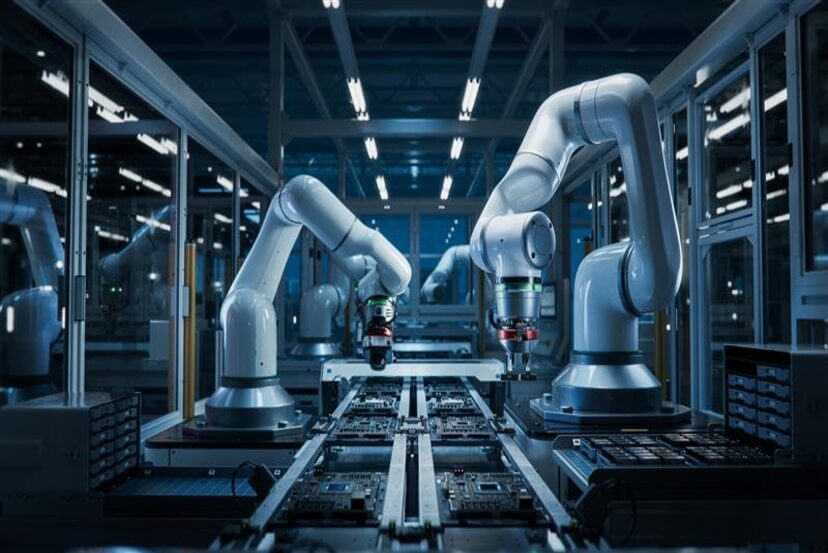
The Role of Robotics in Modern Manufacturing
Introduction: Robotics in Manufacturing is Reshaping the Industry
Manufacturing is changing quickly, with robotics leading this transformation. In various industries, companies are using industrial robots and automation to boost productivity, decrease errors, and solve labor shortages. In India, where the manufacturing sector is growing under initiatives like “Make in India,” robotics is playing a crucial role in modernizing production processes. As demand for high-quality, affordable, and scalable manufacturing grows, businesses see automation as a game-changer.
This blog explores how robotics in manufacturing is revolutionizing the industry in India, the benefits of automation, and the future of industrial robots in modern production.
How Robotics in Manufacturing is Transforming Production Processes
The use of robotics in manufacturing is transforming how goods are made. From automotive to electronics and pharmaceuticals, industries are using industrial robots to streamline operations. Key areas where robotics is making a difference include:
- Precision and Consistency: Robots perform tasks with extreme accuracy, ensuring high-quality production with minimal defects.
- Speed and Scalability: Automated systems can operate 24/7 without breaks, significantly increasing production capacity.
- Workplace Safety: By handling hazardous tasks, industrial robots reduce the risk of workplace injuries.
- Cost Efficiency: Although initially expensive, the long-term savings in labor costs and increased efficiency make automation a wise business decision.
These advancements highlight why manufacturers in India are investing in robotics in manufacturing to stay competitive in the global market.
Automation in Manufacturing: Addressing India’s Skilled Labor Shortage
India’s manufacturing sector is facing a shortage of skilled labor, impacting production efficiency. Automation in manufacturing is closing this gap by:
- Reducing Reliance on Manual Labor: Automated assembly lines and robotic arms take on repetitive tasks, freeing human workers for more complex duties.
- Upskilling the Workforce: Robotics is not replacing jobs but transforming them. Workers are learning to operate, program, and maintain industrial robots, which leads to better-paying and more specialized job options.
- Improving Work Conditions: Automation reduces physical strain and exposure to hazardous environments, improving overall working conditions in factories.
By implementing automation in manufacturing, Indian industries can overcome workforce challenges while improving operational efficiency.
Industrial Robots: Types and Applications in Manufacturing
Different manufacturing sectors use industrial robots in various ways. Some of the most commonly used robots include:
- Articulated Robots: These robots with multiple joints are commonly used in automotive assembly for welding and painting.
- SCARA Robots: Ideal for pick-and-place tasks, these robots are employed in electronics and pharmaceutical manufacturing
- Collaborative Robots (Cobots): Designed to work alongside human workers, cobots are increasingly being used in small and medium enterprises (SMEs) in India.
- AGVs (Automated Guided Vehicles): Used for material handling in warehouses and factories, improving logistics efficiency.
By adopting industrial robots, manufacturers in India are enhancing productivity, reducing waste, and ensuring consistent product quality.
The Future of Robotics in Manufacturing in India
With advancements in artificial intelligence (AI) and machine learning, the future of robotics in manufacturing looks promising in India. Emerging trends include:
- AI-Driven Automation: Smart robots with AI capabilities can learn and adapt to new tasks, making them more flexible and efficient.
- IoT-Enabled Robotics: Integration of robots with IoT (Internet of Things) allows real-time monitoring and predictive maintenance, reducing downtime.
- 3D Printing and Robotics: The combination of robotics and additive manufacturing is revolutionizing prototyping and custom production.
- Government Support and Investment: India’s push for “Industry 4.0” and initiatives like the Production Linked Incentive (PLI) scheme are driving investments in automation and robotics.
These trends indicate that robotics in manufacturing will continue to play a crucial role in India’s industrial growth.
Transform Your Business with Moglix for Robotics and Automation Solutions
The adoption of robotics in manufacturing is no longer a luxury but a necessity for businesses looking to enhance efficiency and remain competitive. As India moves towards becoming a global manufacturing powerhouse, automation and industrial robots will be key to driving productivity and innovation.
At Moglix, we provide cutting-edge automation and robotics solutions to help manufacturers optimize their production processes. Whether you are looking to integrate automation in manufacturing or explore the benefits of industrial robots, Moglix is your trusted partner for scalable and cost-effective solutions.
Contact Moglix today to discover automation solutions for your business and stay ahead in the manufacturing revolution!
Sustainable Manufacturing: Achieving Carbon Neutrality in Production

Sustainable Manufacturing: Achieving Carbon Neutrality in Production
Why Sustainable Manufacturing Matters
Sustainability is now a major focus for businesses globally, with the manufacturing sector playing a key role in this shift. Companies are now focusing on sustainable manufacturing to minimize their environmental impact, reduce carbon emissions, and ensure long-term resource efficiency. Reaching carbon neutrality in production has become essential for business, not just an ethical duty, due to stricter government regulations and consumer demand for eco-friendly products
In this blog, we explore key strategies that businesses can adopt to reduce their carbon footprint, implement eco-friendly production processes, and comply with sustainability standards to move towards carbon-neutral manufacturing.
How to Implement Sustainable Manufacturing Practices
To shift toward sustainable manufacturing, businesses need to incorporate green practices throughout the production process. This includes optimizing resource use, reducing waste, and adopting cleaner technologies. Here are some effective approaches:
- Energy Efficiency Measures: Switching to energy-efficient machinery, installing LED lighting, and enhancing production processes can greatly lower energy use.
- Renewable Energy Adoption: Shifting to solar, wind, or hydropower reduces reliance on fossil fuels and decreases overall emissions.
- Waste Reduction Programs: Implementing lean manufacturing principles, recycling materials, and minimizing waste can help businesses cut costs and reduce their environmental footprint.
- Water Conservation: Industries using large amounts of water should invest in recycling systems and water-efficient technologies.
By integrating these strategies into daily operations, companies can achieve eco-friendly production, enhance efficiency, and reduce costs.
Carbon Neutrality in Production: Steps to Achieve It
Achieving carbon neutrality in production means balancing the amount of carbon dioxide released into the atmosphere with an equivalent amount of carbon removal. Here’s how businesses can reach this goal:
1. Measure and Track Carbon Emissions
The first step is to understand the carbon footprint of manufacturing operations. Businesses should perform life cycle assessments (LCA) to monitor emissions from the extraction of raw materials to the disposal of products. Using smart sensors and sustainable manufacturing software can give real-time data on carbon output, aiding companies in making well-informed decisions.
2. Optimize Supply Chain for Sustainability
A major contributor to carbon emissions is the supply chain. Companies need to collaborate with suppliers who are dedicated to sustainability, including:
- Sourcing raw materials responsibly (e.g., using recycled or certified sustainable materials)
- Reducing transportation emissions by optimizing logistics and opting for local suppliers
- Implementing eco-friendly production techniques such as low-energy processing and biodegradable packaging
3. Invest in Low-Carbon Technologies
Technology plays a key role in reducing emissions. Companies should explore:
- Electrification of Processes: Switching from fossil fuel-based machinery to electric-powered alternatives
- Green Manufacturing Equipment: Using robotics and automation to enhance precision and minimize waste
- Carbon Capture and Storage (CCS): Capturing emissions from factories and storing them underground or using them in industrial processes
4. Adopt Circular Economy Principles
A circular economy approach minimizes waste and extends product life cycles. Key strategies include:
- Designing products for reuse, repair, or recycling
- Implementing take-back programs where customers return used products for refurbishment
- Utilizing biodegradable or recyclable materials to decrease landfill waste
By integrating these principles, manufacturers can ensure that resources are used efficiently and waste is minimized, aligning with sustainable manufacturing goals.
5. Offset Remaining Carbon Emissions
Despite the best sustainability practices, some emissions are inevitable. Businesses can achieve carbon neutrality in production by investing in carbon offset programs such as:
- Reforestation projects that absorb CO2
- Renewable energy credits (RECs) that support clean energy projects
- Community-based sustainability initiatives that promote environmental conservation
By taking responsibility for their carbon footprint, manufacturers can effectively neutralize their impact on the planet.
Compliance with Environmental Regulations
Governments and international bodies are enforcing stricter environmental laws to push industries toward eco-friendly production. Businesses must stay ahead of regulations such as:
- The Paris Agreement: Global commitment to reduce carbon emissions and limit global warming.
- ISO 14001: International standard for environmental management systems (EMS).
- Extended Producer Responsibility (EPR): Laws requiring manufacturers to take responsibility for product disposal and recycling.
- Carbon Tax Policies: Financial penalties on excessive carbon emissions to encourage cleaner practices.
Compliance not only prevents legal risks but also boosts a business’s reputation as a leader in sustainable manufacturing.
The Business Benefits of Sustainable Manufacturing
Beyond regulatory compliance, adopting sustainable manufacturing brings tangible benefits to businesses:
- Cost Savings: Reduced energy and material waste translate to lower operational expenses.
- Brand Reputation: Consumers prefer companies with strong environmental commitments, boosting customer loyalty.
- Competitive Advantage: Companies that prioritize carbon neutrality in production gain a market edge by aligning with global sustainability trends.
- Investor Confidence: Sustainability-driven businesses attract impact investors and funding opportunities.
Partner with Moglix for Sustainable Manufacturing Solutions
Transitioning to sustainable manufacturing is a journey that requires strategic planning, investment, and the right partnerships. At Moglix, we help businesses achieve carbon neutrality in production by providing sustainable procurement solutions, eco-friendly raw materials, and green technology support.
If your company is looking to embrace eco-friendly production, reduce carbon emissions, and stay ahead of sustainability regulations, partner with Moglix today. Together, we can build a cleaner, greener future for manufacturing.
Get in touch with Moglix now to explore sustainable manufacturing solutions!
Can India emerge as a Key Player in Global Manufacturing?
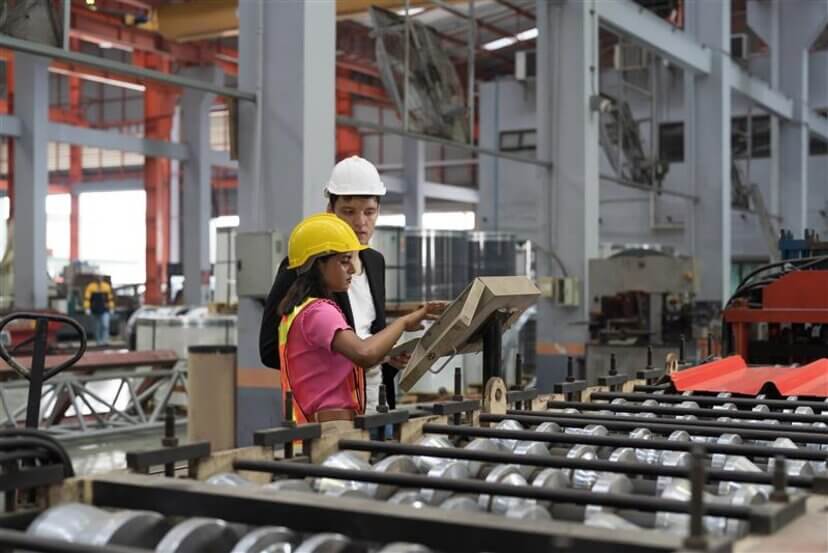
Can India emerge as a Key Player in Global Manufacturing?
In recent years, global supply chains have experienced major shifts, and India is now recognized as a key player in this transformation. Disruptions from events like the pandemic, geopolitical tensions, and trade conflicts have forced businesses around the world to rethink their strategies. Many are now focusing on diversifying supply chains, and India has emerged as a highly attractive destination for manufacturing and sourcing. With its cost advantages, a growing and skilled workforce, and its improving infrastructure, India is positioning itself as the go-to hub for companies looking to optimize their supply chain operations.
The shift toward India has been accelerated by several factors, including the disruptions caused by the global pandemic.. In the wake of these disruptions, companies have been forced to reconsider their reliance on China, often called the “world’s factory,” and look for alternatives. India, with its strategic location, robust domestic market, and expanding manufacturing base, has naturally attracted multinational companies seeking stability and growth.
Is India a better bet than China for supply chains?
Global supply chains have historically been highly centralized, with many key manufacturing processes concentrated in specific regions like East Asia, particularly China. However, the rise of trade barriers, ongoing geopolitical tensions, and challenges related to the pandemic have made it clear that supply chain stability needs to be prioritized.
India offers several advantages that make it a compelling alternative to traditional manufacturing hubs. First and foremost is the cost advantage. While labor costs in China have risen significantly over the past few years, India still offers relatively low labor costs, which makes it an attractive destination for businesses looking to lower manufacturing costs while maintaining quality.
India’s infrastructure has also been improving steadily, with significant investments in roads, ports, and industrial corridors. The government has launched several initiatives aimed at boosting manufacturing capabilities, such as the “Make in India” campaign, which encourages both domestic and foreign companies to invest in local manufacturing. Additionally, India’s geographic location is favorable for global trade, with access to major shipping routes and proximity to the Middle East, Africa, and Southeast Asia.
Finally, India’s domestic market is vast and growing, providing manufacturers with a large base of consumers to cater to. This expanding market offers the dual advantage of serving both domestic needs and the potential to export goods across the globe.
Which sectors are booming in India’s manufacturing?
India’s manufacturing boom is already underway across various sectors, establishing the country as a key global player.
The automotive industry, in particular, has seen growth due to U.S. auto tariffs pushing manufacturers to find alternatives to China. With an established sector, skilled workforce, and improving infrastructure, India has attracted global companies like Ford, General Motors, and Hyundai, making it a hub for vehicle production.
The energy sector is also thriving, with Saudi Aramco investing in India’s refinery and petrochemical industries. This strengthens India’s role in the global supply chain for energy and raw materials.
Similarly, India’s aerospace and defense sectors are growing, with global companies increasingly sourcing components and assembling products there, thanks to the country’s technological expertise, skilled labor, and competitive cost structures.
What Challenges India faces in becoming a global hub?
India’s potential as a manufacturing hub is clear, but challenges remain. One major obstacle is infrastructure. Despite recent improvements, gaps in logistics, supply chain connectivity, and quality standards persist. Ports are often overcrowded, and rail and road networks can delay deliveries. While initiatives like the Bharatmala Project are underway, it will take time to see significant improvements in efficiency.
Policy consistency is another challenge. Frequent changes in tax laws and regulations create uncertainty, discouraging long-term investments. Simplifying these processes is essential for attracting sustained foreign investment.
Additionally, India’s manufacturing sector must enhance production efficiency and quality standards to stay competitive with established hubs like China. While cost advantages are a strength, further advancements in technology and automation are needed to maintain a competitive edge.
How can India strengthen its position in global supply chains?
India’s role in global supply chains is set to grow rapidly in the coming years. With its cost advantages, skilled labor force, improving infrastructure, and expanding manufacturing capabilities, India is well-positioned to become a global manufacturing leader. The opportunities in key sectors such as automotive, aerospace, and energy offer strong growth potential, and India’s growing importance in these industries signals a bright future for its manufacturing sector.
However, to fully realize this potential, India must address the challenges of infrastructure, regulatory consistency, and production efficiency. With the right investments and policies, India can secure its place as a global supply chain powerhouse.
How Moglix can help?
If you are looking to explore the benefits of sourcing or manufacturing from India, Moglix can help you navigate the complexities of India’s manufacturing sector. By partnering with us, you can access the best sourcing options and leverage India’s manufacturing potential to streamline your global supply chain.
Get in touch with Moglix today to explore how we can support your business in harnessing the power of India’s manufacturing boom.
Startup Mahakumbh 2025
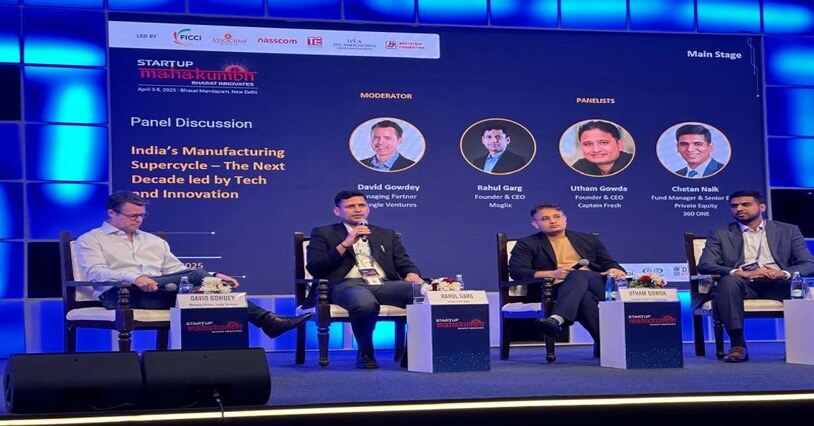
Startup Mahakumbh 2025
Date: 3rd – 5th April’ 2025
Organizer: FICCI
About the event: Mr. Rahul Garg, Founder & CEO of Moglix, shared his vision on “India’s Manufacturing Supercycle – The Next Decade led by Tech and Innovation” at Startup Mahakumbh 2025. The session focused on how technology and innovation will transform India’s manufacturing landscape, with an emphasis on digital transformation, supply chain optimization, and sustainability.
ChemExpo India 2025
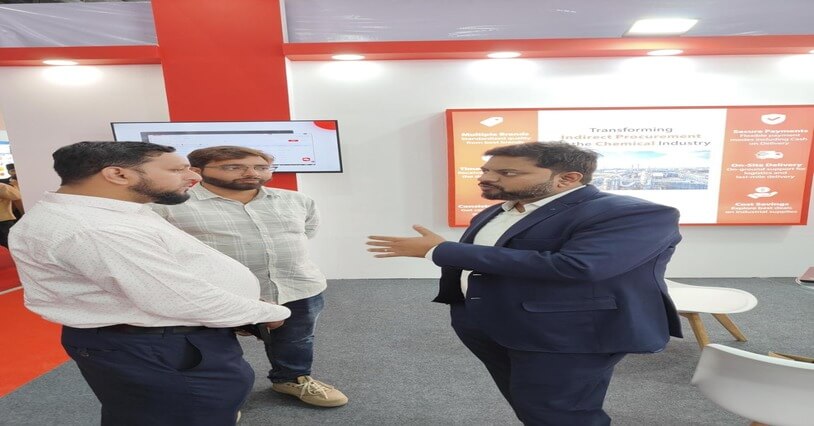
ChemExpo India 2025
Date: 29th-30th April’25
Organizer: Chemexpo Exhibitions Pvt. Ltd
About the event: Two electrifying days at Moglix’s booth at ChemExpo India 2025! It was a pleasure connecting with industry leaders, innovators, and partners to discuss the future of chemical procurement and supply chain transformation.
MARG 3.0
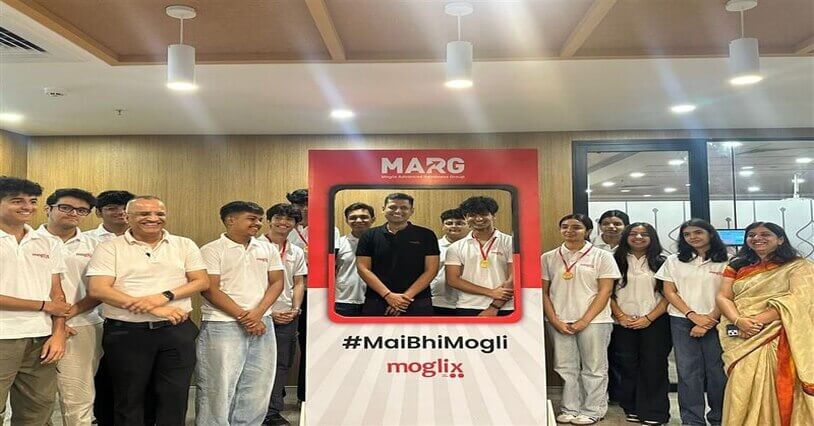
MARG 3.0
Date: 16- 27th June
Organizer: Moglix
About the event: The third edition of the Moglix Advanced Readiness Group (MARG) concluded on a high note with curiosity, creativity, and real-world learning. This immersive program brought together brilliant young minds from Lotus Valley International School and Moglix mentors for a hands-on journey into the world of business, innovation, and leadership.
